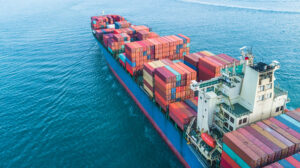In its latest Global Trade Outlook and Statistics report, World Trade Organization (WTO) forecast an increase by 2.6% in 2024 and 3.3% in 2025 in the volume of world merchandise trade, after falling 1.2% in 2023.
However, regional conflicts, geopolitical tensions and economic policy uncertainty pose substantial downside risks to the forecast.
The report’s special analytical section on the Red Sea crisis notes that while the economic impact of the Suez Canal disruptions stemming from the Middle East conflict has so far been relatively limited, some sectors, such as automotive products, fertilisers and retail, have already been affected by delays and freight costs hikes.
In its latest report, WTO economists note that inflationary pressures are expected to abate this year, allowing real incomes to grow again, particularly in advanced economies, providing a boost to the consumption of manufactured goods.
A recovery of demand for tradable goods in 2024 is already evident, as the report highlights, with indices of new export orders pointing to improving conditions for trade at the start of the year.
If current projections hold, Africa’s exports will grow faster than those of any other region in 2024, up 5.3%. This however is from a low base, since the continent’s exports remained depressed after the COVID-19 pandemic.
North America (3.6%), the Middle East (3.5%) and Asia (3.4%) should all see moderate export growth, while South America is expected to grow more slowly, at 2.6%.
European exports are once again expected to lag behind those of other regions, with growth of just 1.7%.
However, the report warns that geopolitical tensions and policy uncertainty could limit the extent of the trade rebound. Food and energy prices could again be subject to price spikes linked to geopolitical events.
The report furthermore presents new data indicating that geopolitical tensions have affected trade patterns marginally but have not triggered a sustained trend toward de-globalization.
Bilateral trade between the United States and China, which reached a record high in 2022, grew 30% less in 2023 than did their trade with the rest of the world.
WTO Chief Economist Ralph Ossa said: “Some governments have become more sceptical about the benefits of trade and have taken steps aimed at re-shoring production and shifting trade towards friendly nations.
“The resilience of trade is also being tested by disruptions on two of the world’s main shipping routes: the Panama Canal, which is affected by freshwater shortages, and the diversion of traffic away from the Red Sea. Under these conditions of sustained disruptions, geopolitical tensions, and policy uncertainty, risks to the trade outlook are tilted to the downside.”



